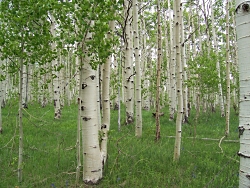
From “Spring Run-off Dangers Ahead,” by Unified Fire Department Chief Mike Watson
Courtesy Cottonwood Heights City
It has, in most cases, taken quite a lot of time, though. Consider the Great Salt Lake: Utah’s most iconic landmark. It’s a remnant of prehistoric Lake Bonneville-itself the pluvial product of slow glaciation and rainwater collection. Thousands upon thousands of years of evaporative sun exposure, though, shrank Lake Bonneville and changed the local climate and ecosystem into what we have today, a salty inland sea implanted within an arid, Mediterranean climate. Though deprived of its acreage- and being immensely saltier than its predecessor- The Great Salt Lake supports an incredibly diverse and highly complex ecosystem. Concocted by the mixture of ancient salts and fresh water provided by the Jordan, Weber, and Bear Rivers, the wetland ecosystems on the fringes of the Great Salt Lake play host to millions of migratory birds each year that are travelling along the Pacific Flyway. Without these oases, the diversity of Utah’s waterfowl-and wildlife at large- would dwindle drastically.
One cannot speak of water’s effect upon Utah’s landscapes without singing the praises of the wondrous redrock canyons that dissect our state’s southern reaches. The force of water upon the high desert of Utah’s allocation of Colorado Plateau is intermillenial, hydrological poetry. Ancient Jurassic and Cretaceous seas deposited layer upon colorful layer of various sediments before heat, pressure, and the recession of shorelines turned them to stone. Water then went back to work within a new climate upon an old geography with rare but violent torrents of flashing floods that sliced ever deeper and more intricate cleavages into the sandstone. I remember visiting one particularly beautiful slot canyon with my wife. The fossilized wave action we spotted above the rim was preserved below as well with streaks of sediment mismatched and displaced into a beautiful kaleidoscope of reds, oranges, and purples. Water’s work was not finished here, though. Dispersed along the distant trail into the best parts of this remote canyon, there were desert riparian jungles of small cottonwoods, mosses, and ferns that harbored ephemeral pools dotted with water striders and even the occasional canyon tree frog.

Courtesy https://dem.utah.gov/2017/03/31/news-release-gov-herbert-declares-state-of-emergency-for-february-flooding/
For Wild About Utah this is Josh Boling
Credits:
Photo: Courtesy & Copyright Cottonwood Heights City
Text: Josh Boling
Additional Reading
Water Week, Eli Robinson, USU Water Quality Extension program, May 8, 2017, https://wildaboututah.org/utah-water-week/
Water Properties, Andrea Liberatore, Stokes Nature Center, Nov 17,2014, https://wildaboututah.org/water-properties/

